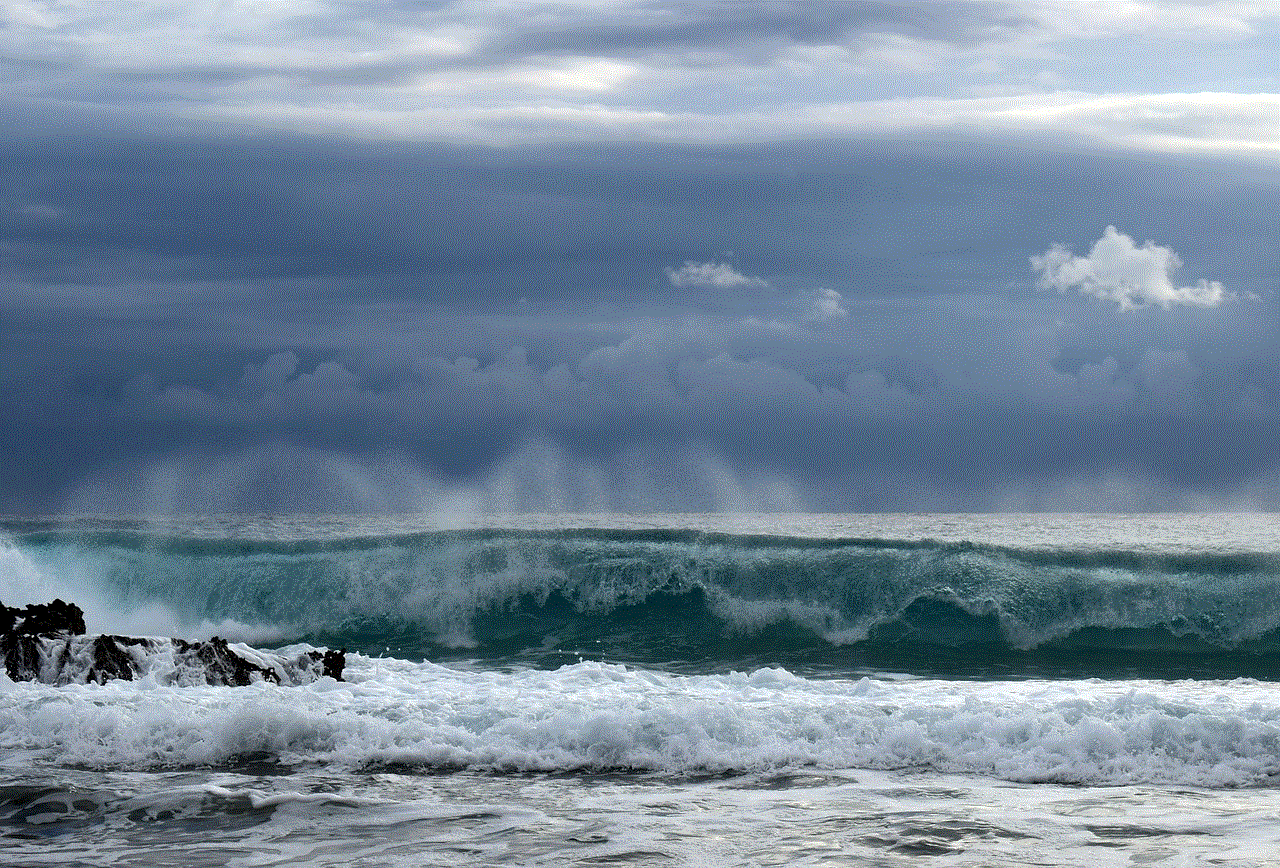t mobile view call history
In today’s digital age, mobile phones have become an integral part of our daily lives. From communication to entertainment, these devices have made our lives much easier and more convenient. One of the most important features of a mobile phone is its call history. It allows us to keep track of our incoming and outgoing calls, helping us to stay organized and connected. However, there may be times when we are unable to access our call history on our mobile phone. This could be due to various reasons, such as a technical glitch or a misplaced phone. In this article, we will explore the topic of why we can’t view the call history on our mobile phones and how we can troubleshoot this issue.
What is Call History?
Before we dive into the reasons why we can’t view the call history on our mobile phones, let’s first understand what call history actually is. Call history is a log that keeps track of all the incoming, outgoing, and missed calls on our mobile phones. It typically includes the time, date, and duration of the call, as well as the contact number or name of the person we were in contact with. This feature is especially useful for people who have a busy schedule and need to keep track of their calls for work or personal reasons.
Reasons Why We Can’t View Call History on Our Mobile Phones
There could be several reasons why we are unable to view the call history on our mobile phones. Some of the common reasons are listed below:
1. Technical Glitches: One of the most common reasons why we can’t view the call history on our mobile phone is due to technical glitches. This could be a software issue, where the call history function may have stopped working or is not functioning properly. In such cases, a simple restart of the phone may help resolve the issue.
2. Recent Phone Reset: If we have recently reset our phone to its factory settings, we may not be able to view the call history. This is because a factory reset erases all the data on our phone, including the call history. In such cases, we may have to rely on our network provider to retrieve our call history.
3. Limited Storage: Another reason why we may not be able to view the call history on our mobile phone is due to limited storage. If the storage on our phone is full, it may not be able to save the call history. In such cases, we can try freeing up some space on our phone by deleting unnecessary files or apps.
4. Incompatible Phone Software: Sometimes, the call history may not be visible on our phone due to an incompatible phone software. This could be due to an outdated operating system or a software update that is not compatible with our device. In such cases, we may have to update our phone’s software to view the call history.
5. Network Issues: Our mobile network plays a crucial role in keeping track of our call history. If we are experiencing network issues, it may affect the call history function on our phone. In such cases, we can try switching to a different network or contacting our network provider for assistance.
6. Third-Party Apps: There are various third-party apps that offer call management services, including call history. Sometimes, these apps may interfere with the call history function on our phone, causing it to not show any recent calls. In such cases, we may have to disable these apps or uninstall them to view our call history.
7. Damaged SIM Card: Our SIM card is responsible for storing our call history data. If our SIM card is damaged, it may not be able to save the call history, making it unavailable for us to view. In such cases, we may have to replace our SIM card to retrieve our call history.
8. Privacy Settings: Some mobile phones have privacy settings that allow us to hide our call history from others. If we have enabled such settings, we may not be able to view our call history on our own phone. In such cases, we can check our privacy settings and disable them to view our call history.
9. Lost or Stolen Phone: If our phone has been lost or stolen, we may not be able to view the call history on it. This is because the call history data is stored on the phone itself and cannot be accessed remotely. In such cases, we can try contacting our network provider to retrieve the call history data.
10. Deleted Call History: Sometimes, we may accidentally delete our call history while clearing our phone’s storage. In such cases, we may not be able to view the call history, as it has been permanently deleted. However, if we have a backup of our phone’s data, we can restore the call history from there.
How to Troubleshoot Call History Issues on Our Mobile Phones
Now that we know the possible reasons why we can’t view the call history on our mobile phones, let’s explore some troubleshooting steps to resolve this issue.



1. Restart Our Phone: As mentioned earlier, a simple restart of our phone may help resolve any technical glitches that may be causing the call history function to not work properly.
2. Check Network Connection: If we are experiencing network issues, we can try switching to a different network or contacting our network provider for assistance.
3. Update Phone Software: If our phone’s software is outdated, we can try updating it to the latest version to ensure compatibility with the call history function.
4. Remove Third-Party Apps: If we suspect that a third-party app is interfering with the call history function, we can try uninstalling or disabling these apps to see if it resolves the issue.
5. Check SIM Card: We can check if our SIM card is damaged by inserting it into a different phone and trying to access the call history. If it works on the other phone, the issue may be with our phone’s SIM card slot.
6. Disable Privacy Settings: If we have enabled any privacy settings that hide our call history, we can disable them to view our call history.
7. Contact Network Provider: In cases of a lost or stolen phone, or a recent phone reset, we can contact our network provider to retrieve our call history data.
8. Restore from Backup: If we have a backup of our phone’s data, we can restore the call history from there if we have accidentally deleted it.
In conclusion, the call history feature is an essential part of our mobile phones, and not being able to access it can be frustrating. However, with the troubleshooting steps mentioned above, we can resolve the issue and retrieve our call history. It is also important to regularly back up our phone’s data to avoid any loss of important information. We hope this article has provided you with valuable insights on why we can’t view the call history on our mobile phones and how we can troubleshoot this issue.
is there a way to block youtube channels



YouTube is undoubtedly one of the most popular websites in the world, with millions of people tuning in every day to watch their favorite videos. With such a vast collection of content, it’s no surprise that some channels may not be to everyone’s liking. Whether it’s due to offensive content, spam, or simply not aligning with your interests, you may find yourself wondering if there is a way to block certain YouTube channels. In this article, we will explore the various methods of blocking YouTube channels and how you can control your viewing experience on this platform.
Before we dive into the specifics of blocking YouTube channels, it’s important to understand that YouTube operates under a community-based model. This means that users have the freedom to create and share content, and it’s up to the viewers to decide what they want to watch. This model has its pros and cons, as it allows for a diverse range of content but also means that some channels may not align with your personal preferences. So, let’s explore the options available for blocking channels on YouTube.
The first and most straightforward method of blocking a YouTube channel is by clicking on the three dots next to the channel’s name and selecting “Block user.” This will prevent the channel’s videos from appearing in your recommendations, and you will no longer receive notifications from that channel. However, this only applies to the specific channel you have blocked, and it does not block the channel’s content from showing up in search results or on other videos.
Another way to block a YouTube channel is by using the “Not Interested” feature. When watching a video, you can click on the three dots below the video and select “Not Interested.” This will prompt YouTube to ask for the reason why you are not interested in the video or channel. You can select “I’m not interested in this channel” and YouTube will take this into account when recommending future videos to you.
If you find yourself constantly receiving recommendations from a specific channel, you can also choose to hide all recommendations from that channel. To do this, you need to go to your YouTube homepage, click on the three dots next to the channel’s name and select “Don’t recommend channel.” This will stop the channel’s videos from appearing in your recommendations, and it also prevents YouTube from recommending videos from that channel to other users based on your viewing habits.
While the above methods are useful for blocking channels on an individual level, there are also options available for parents or guardians who want to restrict access to certain channels for their children. YouTube has a feature called “Restricted Mode” that allows parents to filter out potentially mature content from their child’s YouTube experience. When this mode is enabled, it will hide videos that may contain inappropriate content, including those from channels that have been flagged for inappropriate content by other users.
To enable Restricted Mode, you need to go to the bottom of any YouTube page and click on the “Restricted Mode” button. This will take you to a page where you can toggle the feature on or off. Keep in mind that this feature is not 100% accurate, and some inappropriate content may still slip through the cracks. However, it does provide an added layer of protection for children while they are browsing YouTube.
Another option available for parents is the YouTube Kids app. This app is designed specifically for children and offers a safer and more controlled environment for them to browse YouTube. It features a more simplified interface, and all content is curated and filtered for age-appropriateness. Parents can also set a timer for how long their child can use the app, and they can choose which channels their child has access to.
While blocking YouTube channels may seem like the most straightforward solution, it’s worth mentioning that there are also options available for reporting and flagging inappropriate content on the platform. If you come across a video or channel that violates YouTube’s community guidelines, you can report it by clicking on the three dots below the video and selecting “Report.” YouTube will then review the content and take appropriate action, which may include removing the video or channel from the platform.



In addition to the options mentioned above, there are also third-party extensions and add-ons available that claim to block YouTube channels. However, it’s worth exercising caution when using these as they may not be as effective or secure as the options provided by YouTube.
In conclusion, while there is no direct way to block all YouTube channels, there are several methods available to help you control your viewing experience on the platform. Whether it’s blocking individual channels, hiding recommendations, or using parental controls, you can tailor your YouTube experience to suit your preferences and needs. It’s essential to remember that YouTube is a community-based platform, and while it offers a vast collection of content, it’s up to the users to decide what they want to watch. By utilizing the options available, you can ensure that your YouTube experience is enjoyable and free from unwanted content.
